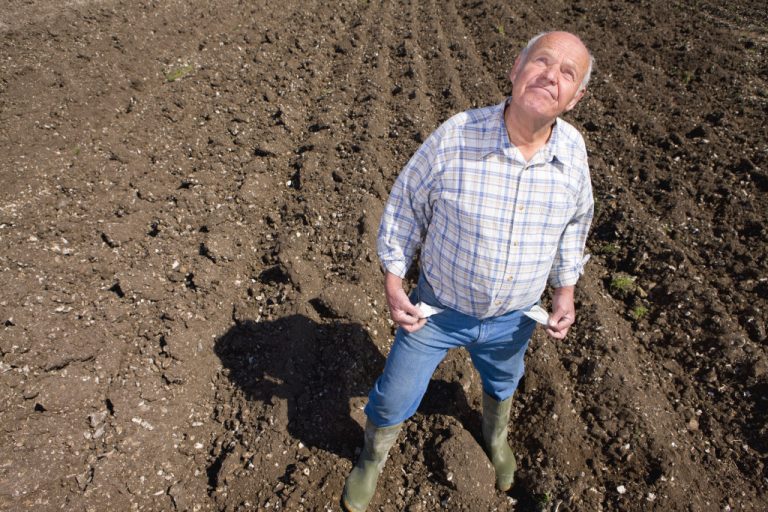According to the National Oceanic and Atmospheric Administration (NOAA), drought persists in half of the United States, despite some rain and a hurricane in Texas early in September. Officials classify dought levels as abnormally dry, moderate, severe, extreme, and exceptional.
The New York Times reports that according to the US Drought Monitor, as of September, about 90 percent of the West is experiencing drought, with 50 percent experiencing severe to exceptional drought. This covers Utah, California, Montana, Idaho, Washington, Oregon, New Mexico, Arizona, Nevada, Wyoming, North Dakota, South Dakota, Colorado, and Southwestern Texas.
The NOAA drought task force stated that the drought in the Southwest is the worst since 1895 and is affecting over 60 million residents. They expect conditions to worsen. Because of the extended period of drought in the US Southwest, scientists are predicting that it may develop into a megadrought that can last for up to 40 years.
Impact of Drought on the Agricultural Industry
Drought directly impacts the agricultural industry, affecting the volume of crop harvests; livestock such as cattle, hogs, and poultry; and dairy supply. The National Integrated Drought Information System (NIDIS) reports that there is moderate to exceptional drought in 1,479 crop-producing counties, affecting 199 million acres of crops. Moderate to exceptional drought is also affecting 19.1 million heads of cattle.
Because water reservoirs in California now hold only 50 percent of their usual capacity, water allocations to cities and farms were cut by 75 percent. Farmers and ranchers use drilled groundwater wells, but the water level may also be lower in areas with the worst drought. Nevada, Arizona, and other states supplied by the Lake Mead reservoir on the Colorado River may also experience cuts in water supply because of the low water level.
According to the US Department of Agriculture (USDA) report, the drought is wilting crops. The nation’s supply of wheat, corn, and soybeans is now at the lowest level since 2013. The Weekly Weather and Crop Bulletin of the US Department of Commerce shows that on September 19, only 59 percent of the corn crop was deemed to be in good to excellent condition. This is 2 percent below that of September 2020. For soybean, only 58 percent is in good to excellent condition. This is 5 percent lower than the same period in the previous year.
Vegetables, fruits, and specialty crops like tree nuts and herbs are even more sensitive to drought conditions, and losses may be higher for these crops. Farmers by the Rio Grande in New Mexico were advised not to plant crops this year.
Reuters reports that ranchers are making the difficult decision to sell or slaughter a large part of their herds because grass did not grow in pastures and there is not enough hay from crops, hence not enough feeds. Wheat, corn, and soy are alternative feeds for cattle. But the drought has also cut down supplies. Ponds used by cattle for drinking water have also dried up. Since female breeders are also sold or slaughtered, there will be fewer calves to rebuild the herd in the coming years. This will lower the supply and increase the price of beef.

Cooperation on Drought Management
The National Drought Mitigation Center (NDMC) reports on the establishment of the Drought Learning Network as a means for people to share their drought-related experiences, lessons they learned, and their best practices for managing drought. Working with it on drought community practices is the Collaborative Conservation and Adaptation Strategy Toolbox (CCAST) under the supervision of the Bureau of Reclamation and the US Fish and Wildlife Service. This group has affiliations with more than 150 people from various organizations.
There is a CCAST Case Study Dashboard that offers more than 100 case studies. Among these is the case of a rancher in southern California who is trying to breed more drought-resistant cattle. There is also a podcast called Come Rain or Shine that shares vital information related to drought.
Widespread Impact of Drought
The agricultural industry is vital to the US economy because it ensures food security and provides many jobs. These jobs are not only limited to farm and ranch jobs but also those in the entire food supply chain, including transportation, processing, and marketing. If crop harvests and the supply of beef, pork, and poultry dwindle, many will lose their livelihoods. Tight supplies will also mean steep price increases for these basic needs. This will impact the cost of living for everyone and the country’s economy as a whole.
Undoubtedly, the drought is causing severe damage to the land and those whose lives depend on it. Fortunately, there are ways many can mitigate its effects. All many of these people can do for now is wait this out and hope for the best.



